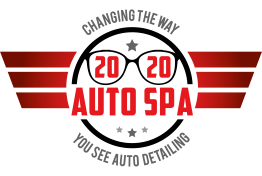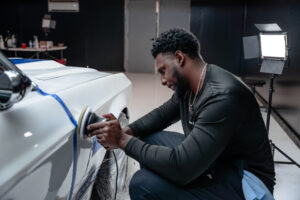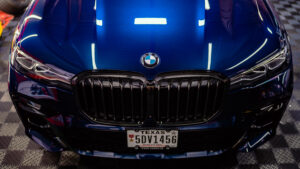Do you have a car with dull or scratched paint? Then paint correction may be the answer for you. Paint correction is a process that can restore your car’s shine and luster without having to repaint it. It involves using special tools and techniques to remove surface scratches, oxidation, swirl marks, and other blemishes from the clear coat of your vehicle’s paint. We will explain how paint correction works and why it might be worth getting done on your vehicle.
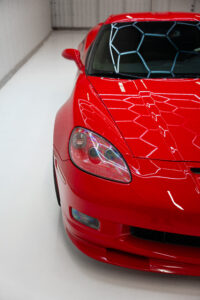
What is Paint Correction?
The clear coat of your car’s paint can have surface scratches, oxidation, swirl marks, and other imperfections removed using a technique called paint correction. It entails employing specialized equipment and methods to bring back the paint on your car’s original glossy finish, such as machine polishing chemicals and abrasives.
In addition to making your car look like new, paint correction can also protect it from further damage by providing a clear protective layer. The paint correction technology is a clear coat repair process and not a paint touch-up. This means that the result is more permanent, and it will last longer than a normal paint job.
How Does Paint Correction Work?
A paint correction Copperas Cove process usually requires multiple steps, depending on the vehicle’s clear coat damage. Here are the following:
Pre-Inspection
The first step in paint correction is pre-inspection. This involves looking at the car’s paint and determining what type of imperfections are present and how deep they go.
Washing
The next step is to wash the car’s paint. This will remove any dirt and debris that could potentially interfere with the correction process.
Compounding
The third step of paint correction is compound polishing, which involves using an abrasive material to help remove any surface imperfections that may be present on the car’s paint.
Finishing
The last step is to finish the process with a polish and wax, which will give the car a glossy shine and protect it from further damage.
The paint correction process is mostly done by professionals and can take anywhere from a few hours to several days, depending on the extent of the damage.
The Tools Used for Paint Correction
The tools used in paint correction vary depending on the severity of the damage. A heavy-cutting compound and a strong buffer are used for heavy scratches, while lighter surface abrasions can be removed with a mild polish. A microfiber buffing pad is also used to apply the compound and polish. Abrasive polish, wax, and sealant are also applied to the vehicle’s paint, depending on the type of damage that needs to be addressed.
Benefits of Paint Correction
Improved Appearance
The most obvious benefit of paint correction is that it can make your car look like new. This can help to increase the value of your vehicle and also boost its curb appeal. Those deeper scratches and swirl marks that were present before will be gone!
Protection from Further Damage
Paint correction can also provide a protective barrier against the elements, helping to prevent further damage from the sun, rain, UV rays, bird droppings, and other environmental factors.
Cost-Effective Solution
Paint correction is a cost-effective solution for removing light scratches and other minor paint imperfections without having to repaint your car. This can save you time and money compared to traditional paint repair.
Long-Lasting Results
Paint correction can provide long-lasting results that will last for several years. This is because the clear coat of your car’s paint is being restored rather than replaced.
See for yourself the amazing results of paint correction when you decide to get it done on your car. With all the benefits that come with it, there is no doubt that paint correction is worth the investment. It will bring out the best in your vehicle and keep it looking great for years to come.
The Differences between Paint Correction, Paint Protection Film, and Ceramic Coating
Car paint correction and paint protection film (PPF) are two very different processes. Paint correction is a process that restores the clear coat of your car’s paint by removing paint defects, whereas a paint protection film is a thin, clear film that is applied to the vehicle’s paint and can protect it from further damage.
Ceramic coating is also a different process. It involves applying a ceramic coating to the vehicle’s surface that can protect it from UV rays, heat, and other environmental factors while providing an additional layer of gloss and shine.
These three can be applied together or separately, depending on the needs of the vehicle. Paint correction is usually the first step and will provide a clean canvas for either paint protection film or ceramic coating to be applied onto.
To answer the question, How do paint correction work, and why should you get it?” The answer is simple: Paint correction can restore your car’s clear coat to its original condition and protect it from further damage. It is a cost-effective solution that will leave your car looking like new with long-lasting results. With all the benefits that come with it, there is no doubt that paint correction is worth the investment. So don’t wait—get paint correction done on your vehicle today!
Frequently Asked Questions
What are the three stages of paint correction?
The three stages of paint correction are compounding, which is used to remove deeper scratches; polishing, which is used to remove light surface imperfections and improve gloss; and sealing or waxing, which provides a protective layer against environmental factors.
How long does it take for paint correction results to show?
It can take anywhere from a few hours to several days, depending on the severity of the damage. You should start seeing a noticeable improvement in your car’s appearance after just the first stage.
How often should I do paint corrections?
It really depends on your specific vehicle, but in general, you should have paint correction done every 12–18 months to keep your car looking its best.
Should I wax after the paint correction?
Yes, it is highly recommended that you wax your car after paint correction to provide an additional layer of protection against environmental damage and ensure the longevity of the results.
How to maintain paint correction
To maintain paint correction, you should make sure to routinely wash and wax your car. It is also important to avoid using harsh chemicals or abrasives when washing and polishing your vehicle. A properly maintained paint job should last for several years.
